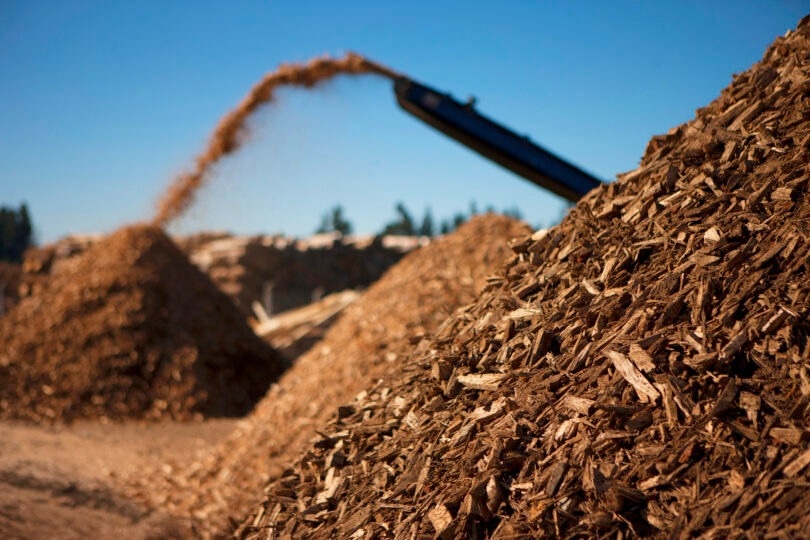In a recent study, scientists at the University of Georgia’s Warnell School of Forestry and Natural Resources found that switching from coal to woody biomass in Georgia’s power plants could both fulfill the state’s energy demands and lower carbon emissions.
 Woody biomass. Image Credit: Getty Images
Woody biomass. Image Credit: Getty Images
For a complete picture of the effects of switching from coal to wood over a 50-year period, the researchers analyzed both economic and environmental considerations.
Georgia consumes more than 7 million tons of coal annually, making it one of the major consumers in the Southeast. Nearly two-thirds of Georgia’s total carbon emissions from the electricity sector are accounted for by this.
According to Farhad Hossain Masum, a Ph.D. graduate and the study’s first author, switching from coal to another fuel source might cut those emissions by 43%.
Masum’s study commenced in 2017 when he started looking for a viable feedstock to replace coal in power plants. Early studies suggested that woody biomass, such as wood chips and logging waste, would be more cost-effective and environmentally friendly than other renewable fuel sources.
Torrefied pulpwood and logging residue can be used in coal-fired power plants without making major upgrades to the plant. This makes it a great alternative to coal, especially in forest-rich southern states.
Puneet Dwivedi, Study Co-Author and Associate Professor, Warnell School of Forestry and Natural Resources, University of Georgia
Wood torrefaction is similar to coffee roasting. In a controlled setting, wood is heated to a temperature of around 400 ℉. The heat dries out the wood and changes its chemical composition. This procedure decreases the biomass of the wood by around 25%, transforms it into something resembling charcoal, and increases its energy density to that of coal.
Based on previous research, we knew this could work, but we weren’t sure of the best way to add torrefied wood as a fuel source. We looked at a few different models to see what would happen if we implemented these programs across Georgia.
Farhad Hossain Masum, Study First Author and PhD Student, University of Georgia
They initially calculated the effects of keeping everything the same and burning coal as before. Secondly, they examined utilizing pulpwood, a byproduct of trees with trunks typically ranging from 5 to 9 inches in diameter, as a fuel source. Thirdly, they assessed the effects of substituting pulpwood and logging waste for coal.
They discovered that Georgia’s energy production would be most carbon-efficient under the third scenario, when pulpwood is used in combination with logging waste. Without making significant modifications to the facilities, this technique might cut carbon emissions from coal-fired power plants by 43%.
However, it would necessitate the annual harvesting of an extra 100,000 acres of forestland. Across the hypothetical situation, these trees would be cut down in six southern states.
The researchers found that this is still more effective than utilizing just pulpwood. To replace Georgia’s coal, 340,000 acres more of forestland would need to be cleared each year if only pulpwood were utilized to make the torrefied wood chips.
“Our results indicate that Georgia and Alabama could supply most of the additional wood required for biopower generation,” further stated Masum.
Even though replacing coal would require cutting down more trees, research has shown that doing so would assist the environment by preventing carbon from entering the atmosphere. When burnt, coal emits noticeably more non-renewable carbon than torrefied wood.
This carbon can generally be thought of as more carbon that was underground rather than in the atmosphere.
However, as they develop, trees take up carbon from the atmosphere. Although some of this carbon may well be released again, overall, less carbon is removed from the atmosphere. When pulpwood and forestry byproducts both replaced coal for energy generation, this drop was at its maximum.
Foresters would be able to use every component of the tree more effectively if logging residue was integrated into the energy supply chain. The majority of logging residue is being burnt on fields in the southeast.
Dwivedi stated, “The use of wood-based electricity will not only reduce the carbon footprint of the state, but it will potentially create local jobs, boost forest health, increase the income of rural households, and ensure the flow of forest-based ecosystem services.”
He further added, “However, a need exists to evaluate the economic and welfare impacts of any initiative to replace coal-based power generation in Georgia to tackle issues operating at the interface of energy access and climate change.”
Weiwei Wang from the Nanjing University of Information Science and Technology in Nanjing, China, as well as Greg Colson from the University of Georgia’s Department of Agricultural and Applied Economics are co-authors of the study. The United States Department of Agriculture provided funding for the study through a McIntire-Stennis grant.
Journal Reference:
Masum, F. H., et al. (2022) Replacing coal in Georgia’s power plants with woody biomass to increase carbon benefit: A mixed integer linear programming model. Journal of Environmental Management. doi:10.1016/j.jenvman.2022.115060.